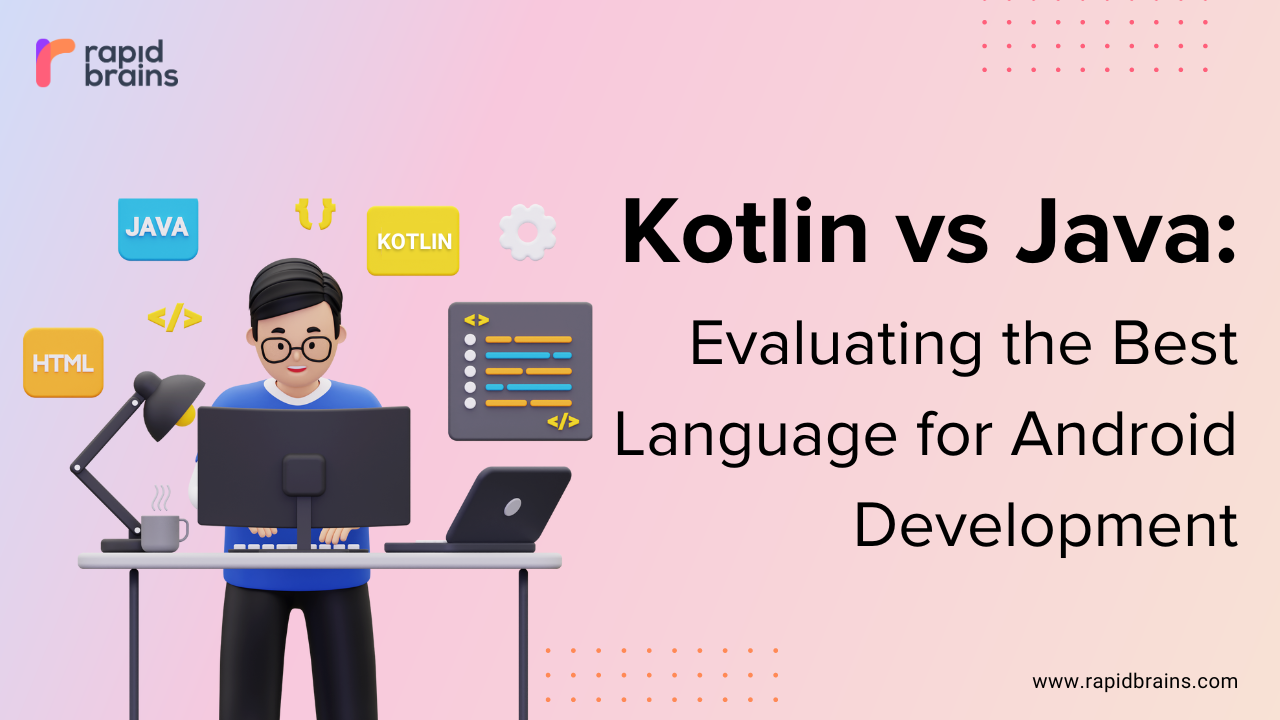
Introduction
Kotlin and Java are two of the most popular programming languages for Android development. Both languages have their own strengths and weaknesses, so it’s important to understand the differences between them before choosing which one to use.
What is Java?
Java is a general-purpose programming language that was first released in 1995. It is a statically typed language, which means that the types of variables and expressions must be declared before they can be used. Java is also a compiled language, which means that it is converted into machine code before it can be executed.
Features of Java
Java is a versatile and popular programming language known for its numerous features that make it a favorite among developers. In this blog post, we will explore some of the key features of Java that contribute to its widespread adoption and success.
1. Platform Independence: One of the most significant features of Java is its platform independence. Java programs can run on any operating system or hardware platform with a Java Virtual Machine (JVM) installed. This “write once, run anywhere” capability enables developers to build applications that can be deployed across various devices and platforms without requiring any modifications.
2. Object-Oriented Programming: Java is an object-oriented programming (OOP) language, which means it emphasizes the use of objects to represent and manipulate data. This approach promotes modularity, reusability, and maintainability in software development. Java’s OOP features, such as classes, objects, inheritance, and polymorphism, enable developers to create modular and extensible code.
3. Robustness and Reliability: Java was designed with a strong emphasis on robustness and reliability. It incorporates features like automatic memory management (garbage collection), exception handling, and type checking, which help prevent common programming errors and enhance application stability. The robustness of Java makes it suitable for building large-scale enterprise applications that require high levels of reliability.
4. Rich Standard Library: Java comes with a comprehensive standard library that provides a wide range of pre-built classes and APIs. This extensive library simplifies common programming tasks and allows developers to focus on application logic rather than low-level implementation details. The standard library includes packages for networking, I/O, data structures, concurrency, GUI (Graphical User Interface), and more.
5. Multithreading and Concurrency Support: Java has robust support for multithreading and concurrency, allowing developers to create concurrent and parallel applications. The language provides built-in mechanisms, such as threads and synchronization, to manage multiple tasks simultaneously. Multithreading enables efficient utilization of system resources, improves responsiveness, and facilitates the development of high-performance applications.
6. Security: Java incorporates several security features to protect against vulnerabilities and ensure secure coding practices. The language includes a built-in security manager, bytecode verification, and a sandbox environment for running untrusted code. These security measures help mitigate risks associated with malicious attacks and protect sensitive data.
7. Portability: Due to its platform independence, Java offers excellent portability. Java Developers can write code on one platform and execute it on any other platform with a JVM. This feature simplifies software deployment and reduces compatibility issues, making Java an ideal choice for cross-platform development.
8. Community and Ecosystem: Java has a vast and active community of developers, which contributes to its success. The community provides extensive documentation, libraries, frameworks, and tools that enhance the development experience and productivity. Popular frameworks like Spring, Hibernate, and Apache Maven have emerged from the Java ecosystem, offering powerful solutions for various application domains.
What is Kotlin?
Kotlin is a cross-platform, statically typed, general-purpose programming language that was first released in 2011. It is designed to be concise, safe, and expressive. Kotlin is interoperable with Java, so it can be used Android Development , so that can also be run on the Java Virtual Machine (JVM).
Features of Kotlin
Kotlin is a statically typed programming language that runs on the Java Virtual Machine (JVM) and can also be compiled to JavaScript or native code. It was developed by JetBrains and officially released in 2016. Kotlin offers several features that make it a popular choice for both Android development and general-purpose programming. Here are some key features of Kotlin:
1. Concise syntax: Kotlin has a clean and concise syntax that reduces boilerplate code compared to languages like Java. It provides a more expressive and readable programming experience.
2. Null safety: Kotlin has built-in null safety features, which help prevent null pointer exceptions (NPEs). It introduces nullable and non-nullable types and enforces safe handling of null values through compile-time checks.
3. Type inference: Kotlin has excellent type inference capabilities, which allow you to omit explicit type declarations in many cases. The compiler can infer the types based on the context, making the code more concise and reducing the likelihood of type-related errors.
4. Interoperability with Java: Kotlin is fully interoperable with Java, which means you can call Java code from Kotlin and vice versa without any issues. This makes it easy to migrate existing Java projects to Kotlin gradually.
5. Extension functions: Kotlin allows you to define extension functions, which enable you to add new functions to existing classes without modifying their source code. This feature promotes a more functional programming style and allows for cleaner code organization.
6. Coroutines: Kotlin has native support for coroutines, which are lightweight concurrency primitives. Coroutines enable asynchronous programming in a more sequential and readable manner, making it easier to write asynchronous code without resorting to callback hell or complex threading constructs.
7. Data classes: Kotlin provides a concise syntax for creating data classes. These classes automatically generate sensible implementations of common methods like `equals()`, `hashCode()`, `toString()`, and `copy()`. Data classes are especially useful for representing structured data.
8. Smart casts and type checks: Kotlin includes smart casts, which allow the compiler to automatically cast variables after checking their type. This feature eliminates the need for explicit type casts in many cases and enhances code readability.
9. Higher-order functions: Kotlin treats functions as first-class citizens. You can pass functions as parameters, store them in variables, and return them from other functions. This enables the use of higher-order functions, which can greatly simplify code that involves working with collections and performing transformations on data.
10. Gradual adoption: Kotlin allows for gradual adoption in existing projects. You can mix Kotlin and Java code in the same project, which means you can start using Kotlin in new parts of your application while keeping the existing Java codebase intact.
These are just a few of the notable features of Kotlin. The language continues to evolve, and its versatility and modern features have contributed to its increasing popularity among Android Development.
Kotlin vs. Java
Speed of coding
Kotlin is generally considered to be faster to code in than Java. This is because Kotlin’s syntax is more concise and expressive, so it takes less code to write the same thing in Kotlin.
Performance
The performance of Kotlin and Java is comparable. However, Kotlin’s use of coroutines can make it more efficient for handling asynchronous tasks.
Stability
Kotlin is a newer language than Java, so it has a smaller community and less mature libraries. However, Kotlin is still a very stable language, and it is unlikely to suffer from any major security vulnerabilities.
Extension functions
Extension functions are a powerful feature of Kotlin that allows you to add new functionality to existing classes. This can make code more concise and easier to read.
Data type
Kotlin has a simpler data type system than Java. This makes it easier to write code that is type-safe and free of errors.
Coding convention
Kotlin has a more consistent coding convention than Java. This makes code more readable and maintainable.
Documentation
The documentation for Kotlin is generally considered to be better than the documentation for Java. This makes it easier to learn Kotlin and to find answers to questions.
Deployment
Kotlin can be deployed to the same platforms as Java. This includes Android, the JVM, and the web.
Popularity
Kotlin is a growing language, but it is not as popular as Java. This means that there are fewer Kotlin developers available, and the libraries for Kotlin are not as mature as the libraries for Java.
Community
The Kotlin community is very active and supportive. This makes it easy to find help and resources for learning Kotlin.
Talent pool
The talent pool for Kotlin is growing, but it is not as large as the talent pool for Java. This means that it may be more difficult to find Kotlin developers with the skills you need.
Learning curve
The learning curve for Kotlin is generally considered to be easier than the learning curve for Java. This is because Kotlin’s syntax is more concise and expressive.
Conclusion
Kotlin and Java are both good choices for Android development. Kotlin is a newer language with some advantages, such as its concise syntax and its support for coroutines. However, Java is a more mature language with a larger community and more mature libraries.
Ultimately, the best language for you will depend on your specific needs and preferences. If you are looking for a language that is easy to learn and use, then Kotlin is a good option. If you are looking for a language with a large community and mature libraries, then Java is a good option.
I hope this blog post has helped you to understand the differences between Kotlin and Java.




